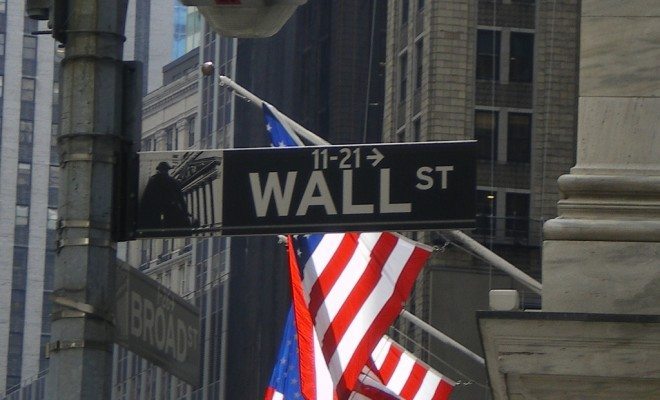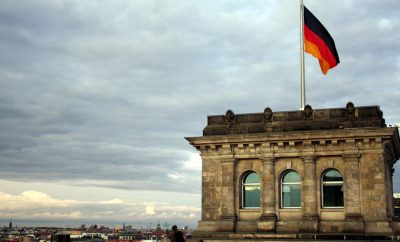 Image courtesy of [dflorian1980 via Flickr]
Image courtesy of [dflorian1980 via Flickr]
Business & Economics
Riding the Wave: The Tumultuous Global Stock Market
On Monday August 24, the main Chinese stock market, the Shanghai composite, fell 8.5 percent in one day. This massive drop set off losses worldwide, beginning in nearby Asian markets including Japan. However, the worry and lack of confidence quickly spread to Europe and to the United States. In the west, this led to massive sell-offs of stocks and the value of the American market dropping 10 percent below its record high, which was achieved only a few months earlier at the beginning of summer. While this was initially blamed on the volatility of the Chinese market and its slowing economic growth, the loss also revealed more issues in the other global markets. Read on to learn about the history of an up and down global stock market, the reasons for the recent crash, and what is expected in the future.
History of Volatility in the Global Stock Exchange
The recent stock market losses, while severe and brisk, are by no means the first and certainly not the worst that have occurred in history. Since ideas such as interconnected economies and even nations are relatively new concepts, to find the first major market crash one would only have to look back less than 400 years. This crash occurred in the Netherlands in 1637. Based on speculation, tulip prices in the country soared, leading many citizens to invest. But the prices eventually peaked and then plunged back to earth, causing many investors to lose everything.
Several more speculative bubbles grew and then burst over the ensuing years in economic powerhouses like Britain and France. The phenomenon would reach a head however, with the stock market crash in 1929 which ultimately led to the Great Depression. This stock market crash, like the ones before it, was the result primarily of speculation, which had been fueled by massive economic growth within the American economy during the 1920s.
However, when the economy began to stagnate, investors initiated a mass sell-off which caused the market to plummet. This was followed by a run on banks so severe that thousands were forced to close. The effects of this collapse spread beyond the borders of the United States to Europe, due to both places’ reliance on the gold standard. The Great Depression would play a major role in the lead up to WWII and it was not until after the war that the global economy recovered.
Despite the devastation of the 1929 collapse, major market meltdowns would continue to take place. In 1987 the U.S. market lost over a fifth of its value in just one day, a day known as Black Monday. The oldest bank in England, Barings Bank, was forced to close due to speculation. Meanwhile in Japan, following a thirty year growth spurt, the market collapsed beginning in 1989 and has left the country in a prolonged state of malaise ever since.
The two most recent crashes both originated in the United States. The first was at the turn of the millennium–the dot-com bubble. The bubble had built upon the belief that the internet was ushering in a new type of economy, which was not subject to the same issues as the past. This led to a number of unwise investments in companies mired in debt or with no value. The crash began in 2000 and continued into 2002. The bursting of this particular bubble cost the NASDAQ 80 percent of its value and led to a recession.
The most recent crash began in 2008. From its pre-recession peak until the market bottomed out 18 months later in 2009, the Dow lost more than 50 percent of its value. This collapse was triggered by sub-prime mortgages, but spread to other industries such as automotives and was prolonged due to other connected issues globally, including the debt crisis in Europe. The economy was only saved and confidence only tentatively restored through massive bailouts. The video below explains the 2008 crisis and the root of many of the stock market crashes:
Reasons for the Recent Crash
Like other crashes before it, the current crash is the result of a number of factors which have combined to cause speculation and panic on a global scale.
China
At the center of the most recent stock market crash is China. China had already been dealing with a declining market since at least June of this year. On June 12 the Chinese government stepped in to fill the void left by a bubble, which had been created by Chinese citizens investing money they did not have. While the government tried a variety of stop-gap measures, these appear to have had little effect. Compounding this problem more was China’s slowing growth. In fact, many of those who invested did so based on the prolonged growth of China’s economy for the last 20 years.
Additionally, confidence in China from the outside also appears to be faltering. This comes as a result of several recent events. The most glaring is the government’s inability to handle this current stock crisis. Even after intervening and devaluing the currency in an effort to make borrowing money cheaper, the market has continued to fall. Other events as well, such as the fiasco with a chemical plant explosion and China’s dubiously reported economic figures have caused foreign investors to lose confidence.
Commodities
Another area directly impacted by China’s recent crash is the commodities market. Commodities are things such as oil, gold, and copper. Many emerging markets, such as Brazil and Turkey, relied on selling commodities in order to build up their economies. However, with China losing vast tracts of wealth daily in its stock market, it can no longer buy as many commodities as in the past. This has resulted in less demand, which means reduced commodity prices and subsequent losses in the emerging markets reliant on them.
United States
Another area feeling a market correction, a loss of 10 or more percent, was the United States. Along with the news about China’s falling market, was the fear of the interest rate hikes in September, which would make borrowing money more expensive. While the United States is not the economic engine it once was, nor the borrower of last resort, it is still the world’s largest economy and any sudden crash in experiences would reverberate worldwide with even greater force than China.
Other Countries
Aside from the United States and emerging markets like Brazil, other places around the world also felt the crunch from China’s continued market crash. This included places like Europe, whose combined market had its worst losses since at least 2011. This also includes countries closer to home near China, such as Japan and Australia, each of whom saw sharp losses in the immediate wake of China’s loss. The accompanying video provides a thorough overlook of the recent Chinese Stock Market crash:
After the Drop
So with all the recent fluctuations in the stock exchange it bears asking, what is next for the world’s markets? The answer is seemingly more of the same. In the U.S. the Dow plummeted 588 points first on Monday, then another 204 points Tuesday. However, on Wednesday and Thursday the market rallied, gaining over 1,000 points in two days. The rally means that, for the week, the market is actually up. In fact the surge on Wednesday and Thursday marks the largest gain in any two-day period in the history of the American stock market.
Around the world, other markets were also experiencing a rebound on Thursday. In Europe and Japan, the stock market rose following dramatic losses earlier in the week. Even in China, the market rose more than five percent, ending a week of losses. In fact, even with all the recent losses, China’s market is still up 43 percent from a year ago.
However, even with markets quickly rebounding, China’s stock market crash cannot just be dismissed. The recent collapse has certainly shaken faith globally, for those who viewed China as the number one growth engine for the future. Furthermore, if this is unfortunately true, there is really no one to take China’s place. Emerging markets, such as Brazil, are overly dependent on commodities, Japan is still stuck in stagnation and Europe, as China’s largest trading partner, is too interconnected, especially as it still recovers from the 2008 crisis.
This leaves the U.S. as the world’s steadying force. While U.S. markets rebounded on the back of news that the GDP grew 3.7 percent in the second quarter, up from the original estimate of 2.3, and that jobless claims continued to fall, that status remains shaky.
Certainly, everything is not perfect in the American economy either. Following the recent market correction and due to the tumultuous world economy, the Federal Reserve has said it will probably not raise interest rates after all. This means that money can still be borrowed cheaply, however it also reveals the fear of weakness in the U.S. and global economies. This weakness is especially troubling because unlike before, when interest rates could be slashed, that option is no longer available. The following video looks at the future of the economy:
Conclusion
There is a saying that goes, “those who don’t learn from history are doomed to repeat it.” The history of the global stock market can offer many examples that attest to the validity of this sentiment. Throughout its history, the market has repeatedly surged and crashed, like waves against a beach. The recent case of China is just one more example of this situation. Luckily in this case though, the losses seem temporary and appear to offer no long-term threat to the global economy.
Nevertheless, the danger remains. This is due to the persistent existence of rampant speculation which falsely builds up the value of any market. When a market is then faced with stagnation or a correction, investors panic and begin selling off their shares or running on banks for cash. This cycle has repeated itself time and time again and shows no sign of stopping despite the numerous examples of markets failures and warning signs. This most recent crash again offers the opportunity to learn and stop repeating the same mistakes which have plagued people and nations as long as markets have existed.
Resources
Vox: The Global Stock Market Crash, Explained
The Economist: The Causes and Consequences of China’s Market Crash
Reuters: Markets Rebound from China Slump, Strong U.S. Data Helps
The Bubble Bubble: Historic Stock Market Crashes, Bubbles & Financial Crises
About News: Stock Market Crash of 2008
International Business Times: China Stock Market Crash Explained in 90 Sseconds
The Wall Street Journal: China to Flood Economy with Cash as Global Markets Lose Faith
The Guardian: China’s “Black Monday” Sends Markets Reeling Across the Globe
CNN Money: Dow sets a 2-day Record, Finishes up 369 Points








Comments